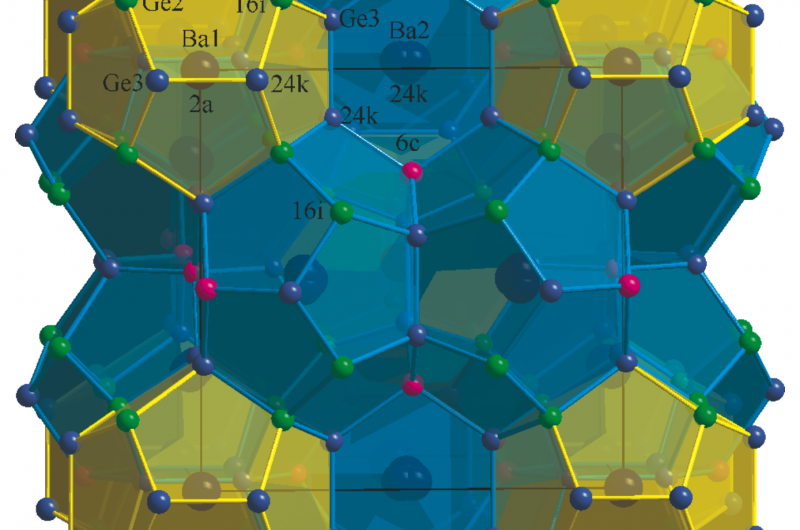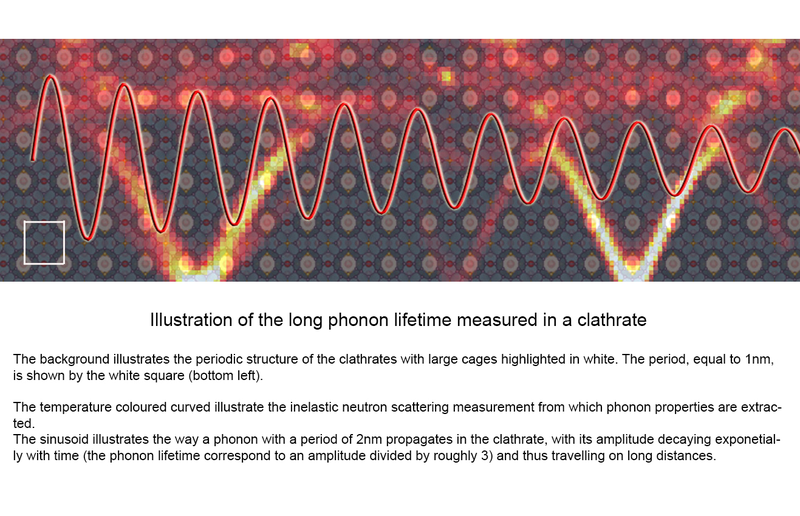Neutrons provide a novel picture of thermal conductivity in complex materials

The engineering of thermal conductivity in semiconducting materials is a central issue in the development of modern nano- and microtechnologies. Low thermal conductivity is important in materials used in technology products, as it provides thermal insulation and thus reduction of heat transfer, ensuring the products do not overheat.
Some representative of the clathrates family, complex chemical substances containing cages that trap atoms, are particularly important to study in this context as they have a range of important applications. Their thermoelectric properties make them very effective for harvesting wasted heat and converting it into electricity. To date, little is known about the exact mechanism underpinning the low thermal conductivity observed in complex structures such as clathrates.
Thermal energy is mainly carried by atomic vibrations called phonons, which are quasiparticles travelling with the sound velocity. Heat propagation and conductivity is directly related to the time a phonon travels in a material before it collides with defects or other phonons. This characteristic time is called the phonon lifetime. As such, understanding individual phonon properties is also fundamental for applications such as waste heat recovery through thermoelectric conversion. Shortening phonon lifetimes achieves low thermal conductivity, and this is a strategy which has led to extensive research around the 'phonon engineering' of thermoelectric materials.
Phonon lifetime is one of the key parameters for quantifying thermal conductivity, but accessing and measuring it is extremely challenging both experimentally and theoretically. The experimental challenge is due to the limits of instrumental capabilities; the resolution achieved by state-of-the-art experimental techniques is too limited for this goal. To date, no experimental evidence of a marked reduction in phonon lifetimes in clathrates has been found with inelastic neutron or X-ray scattering techniques. Nevertheless, there has been considerable progress recently with computational methods for semiconductors with simple structures. To match these advances, it is necessary to validate theoretical predictions by experimentally measuring the lifetime of individual phonon states.

A multi-partner study published today in Nature Communications has addressed phonon lifetime measurement challenges using inelastic neutron scattering (INS) and neutron resonant spin-echo (NRSE) experiments conducted at the Institut Laue Langevin (ILL) in Grenoble, and Laboratoire Léon Brillouin (LLB) Saclay, France. Whereas the "glass-like" thermal conductivity of the clathrate Ba7.81Ge40.67Au5.33 has frequently been associated with a short phonon lifetime, this study measured for the first time to date a very long phonon lifetime using a large single crystal sample of high quality. The study also reveals a dramatic reduction of the number of phonons carrying heat, as a result of structural complexity, allowing a simple and general explanation of the low thermal conductivity of complex materials.
More information: Pierre-François Lory et al. Direct measurement of individual phonon lifetimes in the clathrate compound Ba7.81Ge40.67Au5.33, Nature Communications (2017). DOI: 10.1038/s41467-017-00584-7
Journal information: Nature Communications
Provided by Institut Laue-Langevin





















